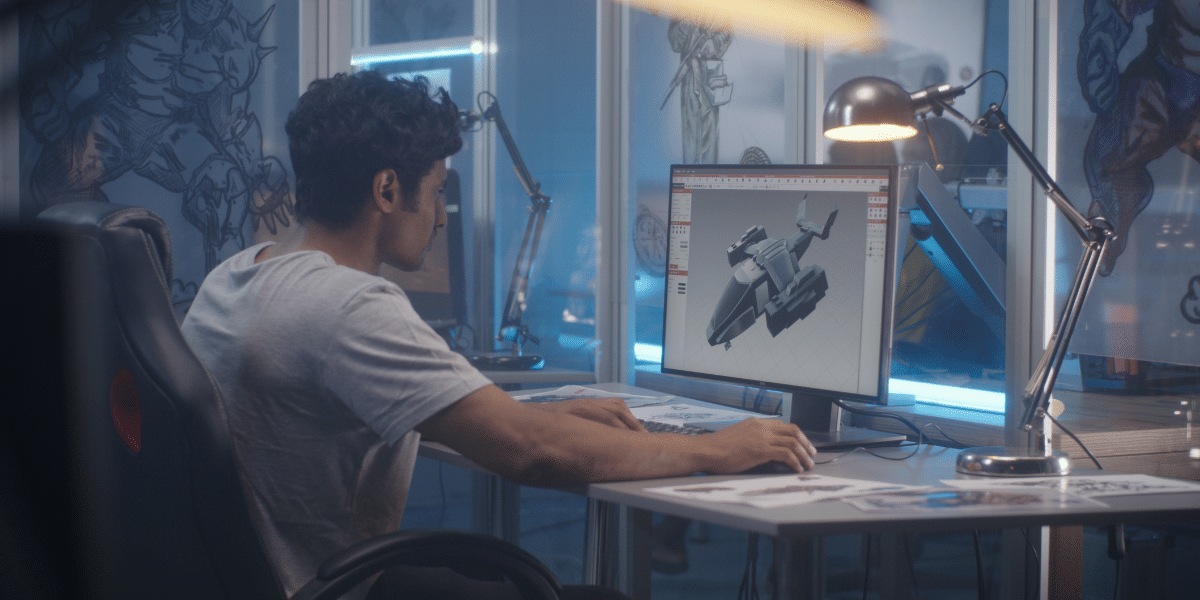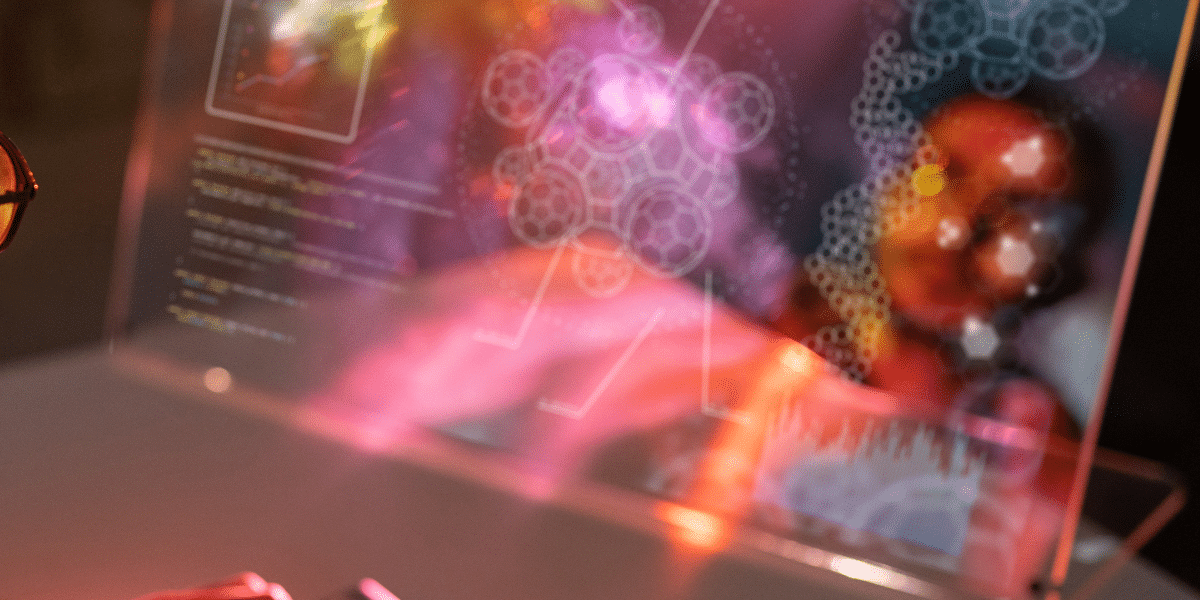Rendering in digital art refers to generating a final image or animation from a 2D (2- dimensional) or 3D (three-dimensional) digital model using computer software.
Are you curious about the magic behind stunning digital artwork and animation? Rendering is the key!
The world of digital art and animation has transformed drastically in recent years, and with it, new terminologies and techniques have emerged. One such technique that plays a vital role in creating high-quality digital art is rendering.
Rendering generates a final digital image or animation from a 3D or 2D model. It is the process where a computer creates a 2D image or animation from a 3D scene, utilizing various techniques and algorithms to add depth, texture, and lighting to the final output.
Related Reading
- Unity 3D System Requirements & PC Recommendations
- The Ultimate Guide to Building the Best PC for Rendering and 3D Animation in 2023
- Best Workstation Computer for 3D Modeling and Rendering 2023
What is Rendering?
In simple terms, rendering generates a final 2D image or animation from a 3D or 2D model. The 3D or 2D model is created using specialized software like Blender, Maya, or ZBrush.
This software allows artists to create highly detailed and realistic models using various tools and techniques. The 3D or 2D model is then exported to rendering software like V-Ray, Arnold, or Redshift.
The rendering software utilizes various algorithms and techniques to add depth, texture, and lighting to the 3D model, creating a final 2D image or animation.
2D Rendering

2D rendering is the process of generating a final 2D image from a 2D model. This technique is used in various digital art forms, including graphic design, illustrations, and concept art.
In 2D rendering, the computer utilizes algorithms to add depth, shading, and lighting to the final image, making it look realistic and visually appealing.
One of the most popular 2D rendering software is Adobe Photoshop, which provides various tools and filters to add depth and texture to the final image.
3D Rendering

3D rendering generates a final 2D image or animation from a 3D model. This technique is used in various digital art forms, including game development, architectural visualization, and animation.
In 3D rendering, the computer utilizes various algorithms to add depth, texture, and lighting to the final output. The 3D model is created using specialized software like Blender or Maya and then exported to rendering software like V-Ray or Arnold.
The rendering software utilizes techniques like ray tracing, global illumination, and ambient occlusion to add realistic shadows, reflections, and lighting to the final output.
Also, Read
- How Long Do GPUs (Graphic Cards) Last?
- 9 Best Mid-Range Graphics Cards (GPUs) In 2023 – Unleash the Power of Your Gaming PC!
- How To Build Your Own Render Farm?
Do You Always Have to Render Your Art (3D and 2D)?
No, you don’t always have to render your art, whether it is in 2D or 3D.
In 2D digital art, rendering is often used to create a final, polished image with detailed lighting and shading effects. However, some 2D artists may leave their artwork in a more raw or unfinished state, with visible brushstrokes or line work.
This can be a stylistic choice or can be used to create a more organic, hand-drawn look.
In 3D digital art, rendering is necessary to create a final, photorealistic image or animation, but not all 3D models need to be fully rendered.
For example, during the modeling and texturing process, artists may use real-time rendering engines to preview and adjust the appearance of their 3D models without fully rendering them. This can be a quicker test of different materials and lighting setups before committing to a final render.
What Is the Best Software to Render Your Art In (3D)?
Many software options are available for rendering 3D art, and the best one for you will depend on your specific needs and preferences. Some of the most popular 3D rendering software options include
- Blender: Blender is a free, open-source 3D creation suite that offers powerful rendering capabilities. It includes many features, including a built-in game engine, sculpting tools, and CPU and GPU rendering support.
- Autodesk 3ds Max: 3ds Max is a professional-level 3D modeling and rendering software widely used in the film, video game, and architecture industries. It offers advanced features such as advanced particle and fluid simulations and support for high-end rendering plugins.
- Maya: Maya is a 3D modeling, animation, and rendering software widely used in the film and animation industries. It offers advanced tools for character animation, as well as support for GPU-accelerated rendering and custom plug-ins.
- Cinema 4D: Cinema 4D is a 3D modeling and animation software that offers robust rendering capabilities, including support for advanced lighting and shading effects. It is widely used in the motion graphics and advertising industries.
- Houdini: Houdini is a node-based 3D animation and VFX software that offers advanced rendering features, including support for GPU rendering and deep compositing. It is used in various industries, including film, TV, and video game development.
Other popular 3D rendering software options include V-Ray, Arnold, Redshift, and OctaneRender. The best software for you depends on your specific needs and the type of 3D art you create.
What Is the Difference Between Modeling and Rendering (3D)?
In 3D computer graphics, modeling and rendering are two distinct processes often used in combination to create a final 3D scene or image.
Modeling refers to the process of creating a 3D digital model, which is a virtual representation of a physical object or scene. This involves using specialized 3D modeling software to create the model’s geometry, topology, and textures. 3D modeling can create many objects and environments, including characters, vehicles, architecture, etc.
Rendering, on the other hand, is the process of generating a 2D image or animation from a 3D digital model. This involves using specialized rendering software to simulate the lighting, shading, and other visual effects of the 3D scene to create a final output that can be viewed, printed, or shared.
The quality and level of detail of the final output depending on the settings specified by the artist, such as the resolution, lighting, and camera position.
In summary, modeling is creating a 3D digital model, while rendering creates a 2D image or animation from that model. Modeling is focused on creating the geometry, topology, and textures of the 3D model.
In contrast, rendering is focused on creating a photorealistic image or animation by simulating the visual effects of the 3D scene.
Conclusion
In conclusion, rendering is critical in creating high-quality digital art and animation. Whether creating a 2D image or a 3D animation, rendering adds depth, texture, and lighting to the final output.
Understanding the basics of rendering is essential for artists, designers, and animators who want to create stunning digital artwork. With advanced rendering software and techniques, artists can create highly realistic and visually appealing digital art and animation that was once impossible to achieve.
